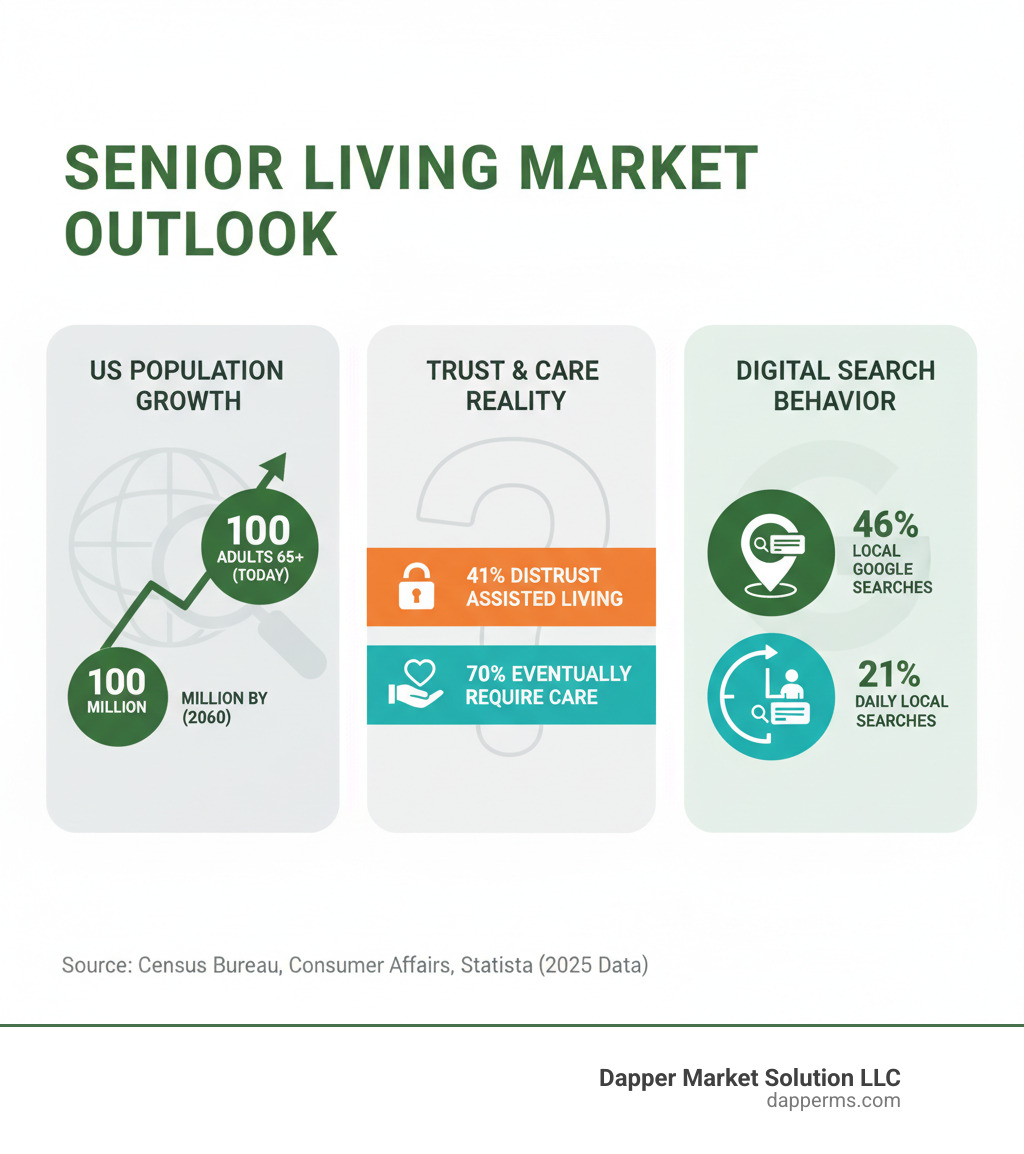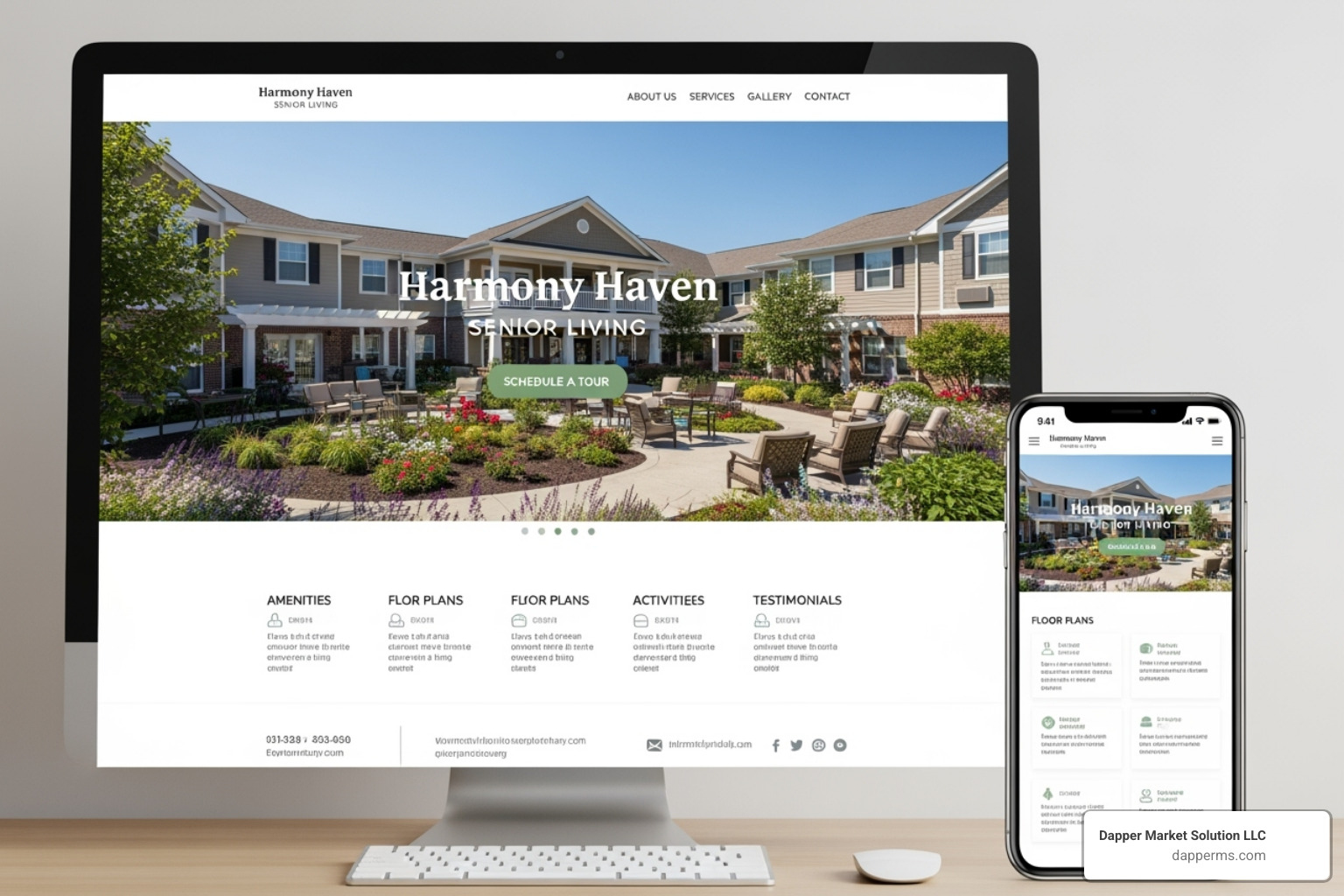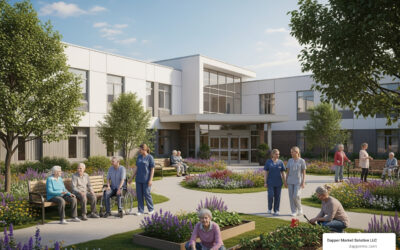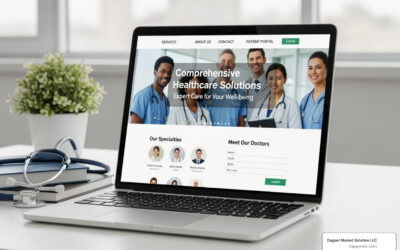

From Empty Beds to Full Houses: Your Guide to Senior Living Marketing Success
Why Marketing Senior Living Communities Requires a Different Approach
How to market senior living communities effectively requires a strategic blend of digital visibility, trust-building, and understanding a dual audience: seniors and their adult children. Here’s what you need to know:
Key Marketing Strategies for Senior Living:
- Build a strong digital presence – Optimize your website and Google Business Profile for local searches
- Target two audiences – Create messaging for both seniors (independence, lifestyle) and adult children (safety, quality care)
- Establish trust – Manage online reviews and showcase resident testimonials
- Differentiate your community – Highlight your unique amenities, care programs, and culture
- Use multichannel marketing – Combine SEO, social media, paid ads, events, and content marketing
- Align sales and marketing – Use CRM systems to track leads and train staff in empathetic selling
The opportunity is massive. By 2060, adults over 65 in the U.S. will more than double to 100 million. Yet a significant trust gap exists: 41% of people don’t trust assisted living homes, even though most will need this care. This gap is your biggest challenge and opportunity.
Families are searching online: 21% of people look for local businesses online daily, and 46% of Google searches are for local information. Without a visible, trustworthy online presence, your community is invisible to them.
Marketing senior living isn’t about selling a product; it’s about guiding families through an emotional decision. This requires an approach built on empathy, transparency, and strategic visibility.
I’m Deepak Dashairya, and I’ve helped senior living communities go from 40% occupancy to 100% with waitlists by building predictable marketing systems. This guide shares the exact strategies we use when figuring out how to market senior living communities that fill beds and build lasting trust.

Foundations: Understanding Your Audience and Defining Your “Special Sauce”
Before diving into the tactics of how to market senior living communities, you must answer two questions: Who are we talking to? and What makes our community different? This foundation is crucial for increasing occupancy, building brand awareness, and bridging the industry’s trust gap. Without it, your marketing will fall flat.

Identifying and Segmenting Your Target Audience
You’re not marketing to one person. You have a dual audience with different needs, fears, and decision-making processes.
The prospective senior resident seeks independence, community, and an engaging lifestyle. They fear losing autonomy and want their daily life to improve. The adult children, often the primary researchers, are driven by a need for peace of mind. They focus on safety, quality of care, staff credentials, and proximity for visits.
Both audiences matter and must be addressed in your marketing.
Demographics show that over half of residents are 85+, meaning you’re often marketing to their adult children in their 50s and 60s. Geography is also critical. Since seniors want to stay near familiar surroundings, your marketing must be hyper-local, especially since 46% of Google searches are for local information.
The bottom line? Create buyer personas that dig into both demographics (age, gender, location) and psychographics (values, fears, motivations). When you truly understand who you’re talking to, your messaging becomes far more effective.
How to Market Senior Living Communities by Standing Out
Most senior living communities seem similar on paper. To stand out, you must identify and articulate your “special sauce”—the unique blend of experiences, culture, and benefits only your community offers. It’s about finding what genuinely makes you different and telling that story.
A competitive analysis helps you understand the landscape and differentiate your community. Pinpoint what makes you unique:
- Unique Amenities: A chef-driven dining program, a modern wellness center, or a resident garden.
- Specialized Care Programs: A unique memory care model, a higher staff-to-resident ratio, or specialized dementia training.
- Staff Expertise and Passion: The genuine warmth, respect, and competence of your team are powerful differentiators.
- Community Culture: Is your community vibrant and social, intellectually stimulating, or focused on active wellness? This culture creates the feeling of home.
Developing a clear brand message that communicates your special sauce is vital. It’s about showing what life is actually like in your community through authentic stories, photos, and videos.
For a deeper look at crafting these strategies effectively, check out our guide on Proven Senior Living Marketing Strategies That Drive Results. And if you want to see how we help communities define and communicate their unique value, visit our Senior Living page.
The Digital Front Door: Your Website, SEO, and Online Presence
Without a strong online presence, your community is invisible. Families turn to Google first when searching for care, and 46% of Google searches are for local information. While only 50% of senior care marketers find their websites effective for lead generation, this presents a huge opportunity for you.
Your website is your digital front door—the central hub for all marketing efforts and the first impression you make on families. When you’re learning how to market senior living communities effectively, your website is where everything comes together. Our specialized Senior Living Web Design & Development services are built to turn your digital front door into a welcoming, conversion-focused experience.
Building a High-Converting Senior Living Website
Your website must do more than look pretty; it must guide worried families to the next step. Key elements include:

- Mobile-First Design: Adult children research on their phones. Your site must be responsive and easy to steer on any device.
- Intuitive User Experience (UX): Serve both tech-savvy adult children and less-comfortable seniors with clear navigation and logically organized information.
- High-Quality, Authentic Media: Avoid stock photos. Use real photography and video of your community, residents, and staff to build trust.
- Virtual Tours: Essential for out-of-state families, video or 360-degree tours build familiarity and comfort before an in-person visit.
- Clear Floor Plans and Pricing: Transparency builds trust. Providing starting rates helps families self-qualify and shows you’re upfront.
- Resident Testimonials: Persuasive video and written testimonials from happy residents and families create a powerful emotional connection.
- Strong Calls-to-Action (CTAs): Guide visitors with clear CTAs like “Schedule a Tour” or “Download Our Brochure” on every page.
We’ve seen how transformative the right website design can be, as detailed in our work on How Custom Healthcare Websites Transform Patient Experiences.
Winning at Local SEO
When a family searches “assisted living near me,” you need to be at the top. Local SEO is your secret weapon.
- Google Business Profile (GBP): A strong GBP is critical for local search. Optimize every section, post updates, add photos, and manage reviews to appear in the “Local Pack.”
- Local Keyword Targeting: Weave location-specific phrases like “memory care in South Lyon” into your website content to match what families are searching for.
- On-Page SEO: Optimize your site’s technical elements, including meta titles, descriptions, and headers, with relevant keywords to help search engines understand your content.
- Local Citations: Ensure your Name, Address, and Phone number (NAP) are consistent across all online directories to avoid confusing search engines and users.
Understanding how to market senior living communities in today’s digital landscape means mastering local search. For a deeper dive into dominating your local market, explore our comprehensive guide on Assisted Living SEO Strategies for Winning Local Markets: A Guide.
Content, Social Media, and Ads: Actively Engaging Your Audience
With a solid digital foundation, it’s time to engage your audience through strategic, authentic storytelling. You’re not selling apartments; you’re sharing stories of vibrant lives and dedicated care. This multichannel approach builds trust over time, as a family might find you on Google, see a story on Facebook, and then book a tour from your website. Each touchpoint reinforces the others, creating a cohesive brand picture. Our Content Marketing services are designed to create this seamless experience.

Leveraging Content Marketing and Storytelling
Content marketing positions you as a trusted resource by answering questions and showing real life in your community.
- Helpful Blogging: Address common concerns like “how do I know when my parent needs assisted living?” to become a knowledgeable partner.
- Resident and Staff Stories: The most powerful content comes from within. Share interviews and stories that bring your community to life and resonate emotionally.
- Showcase Daily Life: Post photos and videos of daily activities—yoga classes, garden clubs, social events—to help prospects visualize life in your community.
- Authentic Video: Video tours and testimonials are highly effective. Authenticity is more important than high production value.
- Build Trust with Transparency: Be open about your services and pricing. Honesty is appreciated during this difficult decision. For strategies on how content can improve your visibility, check out our guide on Boost SEO Efforts with Proven Content Strategies.
How to Market Senior Living Communities with Social Media and Paid Ads
Social media builds relationships, while paid ads ensure visibility to active searchers.
- Focus on Facebook and YouTube: These are the primary platforms for reaching adult children (Facebook) and hosting long-form video content like tours and testimonials (YouTube).
- Keep Social Channels Alive: Share daily moments and respond promptly to comments and messages to show you are attentive and caring.
- Use Targeted Facebook Ads: Reach adult children based on age, location, and interests with relevant ads promoting guides, events, or community videos.
- Capture Intent with Google Ads: Appear at the top of high-intent searches like “memory care near me” to connect with families actively looking for solutions.
- Stay Top-of-Mind with Retargeting: Use retargeting ads to gently remind website visitors about your community as they browse other sites and social media.
To understand the full power of strategic paid advertising, explore Dominate Digital: How PPC Advertising Can Catapult Your Business Forward.
Beyond the Screen: Community Engagement and Sales Alignment
Marketing senior living isn’t just about digital efforts. Human connections made through events and a skilled sales team are what truly invite families in. Marketing and sales must be perfectly synchronized: marketing generates interest, and sales guides families through the decision. When they work together, occupancy rates soar. Our work with MemoryLaneHome.com shows exactly how powerful this integrated approach can be.
Hosting Effective Events and Building Local Partnerships
In-person experiences are irreplaceable for generating leads and strengthening ties.
- Educational Events: Host workshops on topics like financial planning or memory care to position your community as a trusted resource.
- Social Events: Showcase your vibrant lifestyle with themed brunches, holiday parties, or creative gatherings that let prospects imagine living there.
- Community Events: Build your local reputation by sponsoring health fairs, hosting fundraisers, or opening your doors for community groups.
- Local Partnerships: Build relationships with healthcare professionals and elder law attorneys. Their referrals carry tremendous weight with families.
Aligning Sales and Marketing for Higher Occupancy
Marketing generates leads, and sales converts them into move-ins. These teams must be aligned.
- Formal Sales Training: Train all prospect-facing staff in empathetic, needs-based selling. This isn’t about high-pressure tactics; it’s about understanding family concerns.
- Empathetic Approach: Recognize the emotional weight of the decision. Listen more than you talk, ask thoughtful questions, and be transparent about pricing.
- Use a CRM System: A Customer Relationship Management (CRM) system is essential for tracking leads from first contact to move-in, allowing for personalized, helpful follow-up.
- Lead Nurturing: Use automated email campaigns to provide valuable information over time, keeping your community top-of-mind. With email projected to reach 4.37 billion users, this channel remains powerful.
- Ask for the Sale: After addressing concerns, be prepared to ask closing questions to help families move forward with their decision.
Want to see how your current efforts stack up? Explore our comprehensive guide on Proven Senior Living Marketing Strategies That Drive Results to assess and strengthen your sales and marketing initiatives.
Building Unshakeable Trust: Reputation Management and Brand Ambassadors
In senior living, trust is everything. A staggering 41% of people don’t trust assisted living and nursing homes to keep them safe, creating a massive barrier. Every interaction, from a phone call to an online review, shapes your reputation. With 87% of consumers using Google to vet local businesses, your online reputation is your digital handshake. By marketing with trust at the center, you can turn skepticism into confidence and transform residents and staff into powerful advocates.
Mastering Online Reputation Management
Active reputation management is a core part of how to market senior living communities successfully.
- Monitor Online Reviews: Regularly check Google, Facebook, and industry sites like Caring.com where families conduct research.
- Respond to All Reviews: Thank users for positive reviews to show you’re engaged. For negative reviews, respond promptly and professionally. Apologize, offer to make it right offline, and show you are committed to solving problems. A thoughtful response to criticism can build more trust than a dozen positive reviews.
- Encourage Reviews: Don’t be shy about asking satisfied families to share their experiences. Make it easy by including review links in your email signatures and follow-up communications.
We’ve seen how powerful effective reputation management can be, as demonstrated by the positive change for Pine Haven Assisted Living.
Activating Residents and Staff as Brand Ambassadors
Your most authentic marketing assets are your happy residents and dedicated staff. Families trust real people, not ads.
- Resident Referral Programs: Implement a formal program to reward residents for referrals. Word-of-mouth from someone living in your community is marketing gold.
- Feature Happy Residents: With permission, showcase real residents in your photos, videos, and testimonials. Their authentic stories resonate deeply with prospective families.
- Empower Your Staff: Encourage your team to share positive stories about their work. Their passion is visible proof of your quality care.
- Create a Positive Work Culture: Invest in your staff through training, recognition, and appreciation. Happy staff provide better care, and families notice this positive energy.
Your brand ambassadors are already there, waiting to share their stories. Give them the platform and encouragement they deserve. That’s how you build unshakeable trust.
Frequently Asked Questions about Senior Living Marketing
What is the most critical element of a senior living marketing strategy?
The most critical element is deeply understanding your dual audience: the prospective senior resident and their adult children. The senior wants independence, community, and an engaging lifestyle. The adult child prioritizes safety, quality care, and peace of mind. Your marketing must address both sets of needs and fears with empathy. If you only speak to one, you’re missing half the conversation and won’t build the confidence needed for this life-changing decision.
How do you measure the ROI of marketing efforts?
Measuring ROI is about understanding what works so you can optimize your budget. We track specific metrics for every initiative.
- Digital Marketing: We analyze website traffic, conversion rates (e.g., form fills), cost per lead from ads, and the source of each lead (Google, Facebook, etc.).
- Offline Events: We track attendance, tours booked from the event, and eventual move-ins.
- CRM Integration: Your CRM system is key to tracking the entire journey from initial inquiry to move-in.
Consistently tracking these metrics reveals which strategies deliver the best return, allowing for data-driven decisions to optimize your marketing spend.
Should our community’s pricing be on our website?
Yes, absolutely. Transparency is key to building trust. While you don’t need to list every fee, providing starting rates or pricing ranges on your website shows you’re open and honest. Families researching late at night need to know if they can afford your community. Hiding prices can make them assume the worst or feel you’re not being upfront. Publishing pricing helps prospects self-qualify, saving your sales team time and attracting more qualified leads. It empowers families with the information they need and builds the essential goodwill required for such an important decision.
Conclusion: Your Partner in Building a Thriving Community
Marketing a senior living community is about creating a vibrant, trusted community where seniors thrive and families find peace of mind. By understanding your audience, building a powerful digital presence, engaging with authentic stories, and aligning your teams, you create sustainable growth that transforms lives.
This journey requires a strategic approach that puts people first, building trust with every interaction to bridge the gap between the need for care and the 41% of people who don’t trust assisted living homes. Success in how to market senior living communities means embracing both the art of connection and the science of data-driven results.
You don’t have to steer this complex landscape alone. At Dapper Marketing Solutions, we specialize in crafting custom strategies for senior living communities. We’ve helped communities go from struggling occupancy to thriving waitlists by digging deep to find their “special sauce” and creating marketing systems that deliver predictable results. We handle the complexity of web design, SEO, and content marketing so you can focus on what you do best: caring for your residents.

Ready to turn empty beds into a full, thriving house? Contact us today to learn how our specialized senior living marketing services can help you achieve your occupancy goals.




